Bugatti has had a chequered past. First there were the glory days of the 1920s and 30s, then in 1947 Ettore Bugatti died and shortly afterwards, and without his steady hand on the tiller, the factory shut its doors for good. There was an attempt in the mid 1950s by Ettore's older son, Roland, to resurrect his father's company but that failed, as did Virgil Exner's effort in 1965, neither finding sufficient interest from investors to take either project further.
Countach man Gandini styled the EB110
Thereafter, any thoughts of bringing the company back to life were shelved until 1989, when the Italian entrepreneur Romano Artioli bought the rights to Bugatti from the aircraft manufacturer Messier-Bugatti. He had big ideas for Bugatti, and apparently the cash to match too. A new state-of-the-art factory was built just north of Modena, Italy, and no expense was spared in the design of the new Bugatti. Starting from scratch, it was engineered by Paolo Stanzani and styled by Marcello Gandini, co-creators of the Lamborghini Countach, and it was launched at Palace of Versailles September 15 1991, marking Ettore's 110th birthday, and aptly named EB110.
200mph club
Today, we really don't think twice about a car with more than 500hp - no self-respecting uber barge would show its face with less - but back then, at the start of the 1990s, there were only a handful of cars which could boast such high numbers. So, with 560hp on tap, not only was the EB110 somewhat extraordinary in that respect, it was also revolutionary in the way the power was extracted out of mid-mounted 3.5-litre V12 engine. Stanzani added five valves per cylinder, four turbochargers, a bespoke six-speed gearbox, and four-wheel drive.
Looks dramatic, sounds a bit too stealthy
Headline writers of the time wrote about the £285,000 EB110 being the most advanced production car ever built and focused on its speed - 0-62mph in 4.9 seconds, top speed of 213mph. Gandini wanted the EB110 to become another poster-car for boys of all ages and set about coming up with a suitably dramatic design. It was a far cry from the wedge shape and acute angles of the Countach. Instead, the EB110 is one long, smooth line of aluminium bonded onto a carbon fibre chassis, yet still retains his famous trademark scissor doors. The best testimony to his styling is whether it has stood-up to the test of time, and it has. Apart from the headlights, which look like those from a 1989 Nissan 300ZX, the rest of it has dated well. It certainly doesn't instantly appear to be a car which is rapidly approaching its 19th birthday. Proof of this, if it were needed, is in the fact that it can still make kids wee themselves with excitement whenever they see it.
Interior hasn't aged as well, fair to say
It's a shame then, the same can't be said for the interior. As expected, several cows have been sacrificed for the sake of the seat coverings, which still gives it a luxurious flavour. However, the rest of the cabin just feels and looks so dated. The plastics are cheap and the wood veneers are tacky although, for an Italian manufacturer of its day, it has all been bolted beautifully together. Then there are the switches and buttons. These are strewn everywhere, as if an over-excited orang-utan had placed them there, and I kid you not here; the air vents on top of the dashboard cannot be reached by anything human. On a positive note it is a supremely comfortable place to be sat in for a long period of time and the driving ergonomics aren't half bad.
500hp-plus was big news for the time
Surprisingly, for a supercar of its generation, it's a relatively easy thing to drive. Admittedly, the low-slung seating position and numerous blind spots take some getting used to, as do the closely positioned offset pedals, and in particular the heaviness of the clutch. It takes the leg strength of Samson to depress it. Thankfully there's enough length in the mid-gearing - especially 3rd - which helps in not ending up with thighs like Sir Chris Hoy.
Quiet at the back
Artioli had a vision though, and his unyielding intention was to create a tame racing monster, and that's exactly what he got with the EB110. The only problem is he may have muted this particular monster a little too much. I'll be honest here, my inner hooligan wanted to hear a big loud noise expelled from the V12. This car should scream out "LOOK AT ME", instead, the exhaust note is little more than a stage whisper, which is a slight disappointment.
It's got the stance and the 200mph pace
Lulled into a false sense that the V12 is not really doing very much, when you do stab the throttle what happens next is nothing short of a sheer surprise. The grunt is instantaneous. Its performance figures tell some of the story but do not explain what it feels when that onslaught comes out of nowhere - you're left hanging on for dear life. It's a physical, heavyweight experience, which can make the best of drivers question whether they should start going to the gym more often. The four-wheel drive helps makes it heroically sure-footed, even though just 27 per cent of the power is ever apportioned to the front wheels.
For all of Artioli's grand plans, only 139 EB110 GTs were ever built. The recession of the 1990s put pay to further orders and the company went bankrupt, leaving Volkswagen to pick up the pieces and acquire the production rights in 1998. And we all know what happened next. But without the EB110 the Bugatti story could have had a completely different outcome, and for that one reason alone we should all get down on bended knee and hail this mighty car.
BUGATTI EB110
Engine: 3,500cc V12 quad-turbo
Transmission: 6-speed manual
Power (hp): 560@8,000rpm
Torque (lb ft): 448@3,700rpm
0-62mph: 4.9sec
Top speed: 213mph
Weight: 1,600kg (approx)
On sale: 1991-1998
Price new: £285,000
Price now: c. £350,000
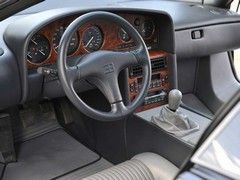 These days you'd have the carbon on show |
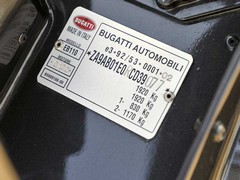 Bugatti name returned from the dead, in style |
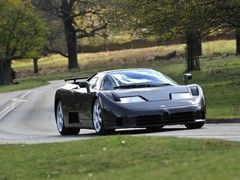 Dramatic looking supercar boxes ticked |
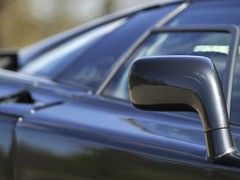 Angular lines of their time but aging well |
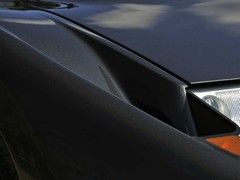 Front wing slats among the distinctive features |
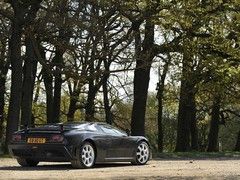 Quad-turbo V12 is bonkers complicated |
| |
|
| |
|
| |
|
| |
|
| |
|
| |
|
| |
|